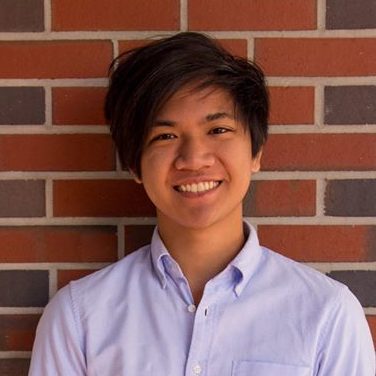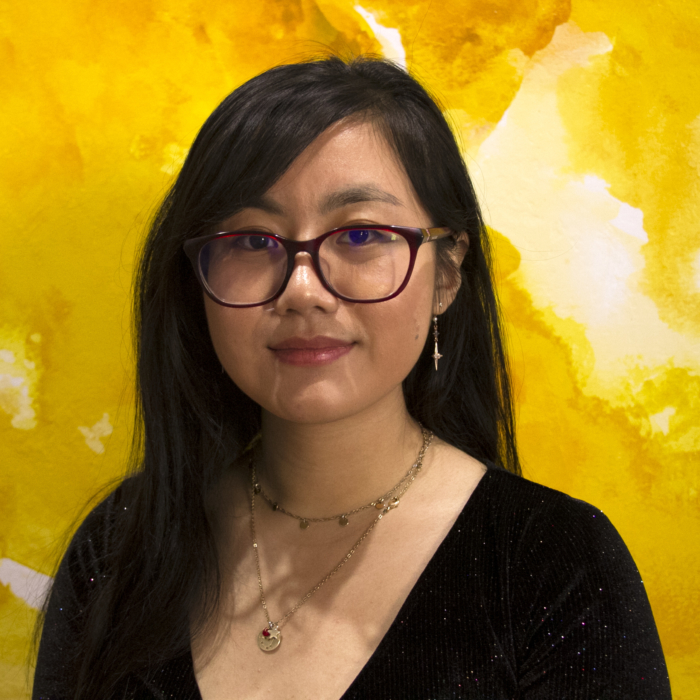
Splashes of vibrancy, explosions of vivid hues dust the faces of everyone around you. The spirit of a nation celebrating together with everyone—your neighbors, family, friends—joining in on the camaraderie. The bursts of color that unite an entire nation and people across the globe in the celebration of the beginning of spring.
For many Hindus, this is Holi, the festival with perhaps the biggest spotlight in Western media. Beyond its religious significance and global popularity, Holi is a celebration outside of social or economic status, said distinguished professor of Hindu Studies Vasudha Narayanan, Ph.D. According to Narayanan, “(Holi) is also an equalizer at a time in which hierarchies are forgotten.”
Religious ceremonies and festivals are an opportunity to celebrate their heritage and remind themselves of their values. For diverse religions, such as Hinduism and Buddhism, practicing these events in America can sometimes lead to more uniformed practices. It can also be a time to simply enjoy the season and bring people together.
Hinduism
Holi
To Anjelika Chatwal, University of Florida senior and 2015-2016 Indian Student Association co-director of the Holi celebration at the University of Florida, Holi is a colorful celebration with a relaxed and fun atmosphere.
Among the primary aspects of the celebration, people gather at the event not just to throw pigments of color and spray each other with water, but also to spend time with friends, listen to Indian music and eat Krishna lunch, Chatwal said. The celebration even attracts local families from around Gainesville and people who, like Chatwal herself before coming to UF, have never participated in Holi before.
According to Chatwal, Holi is the culmination of ISA’s efforts to achieve “unity through diversity.” As a religion, Hinduism is exceptionally diverse and deeply tied to cultural, political and social issues, Narayanan said. Consequently, like Buddhism and Islam, Hinduism’s practices vary across different regions.
Deities
According to Praveen Varanasi, president of the UF Indian Student Association, some holidays transcend geographical boundaries and are celebrated across much of South Asia and even within America, such as Holi, Diwali (Deepavali) or Navratri. But the celebration of individual deities, such as the birthday of Ganesh, vary among communities.
Despite variances in these holidays, the central themes of Hindu celebrations remain the same. According to
Varanasi, the triumph of good over evil and light over darkness is a prevailing cause for celebration. Many Hindu holiday traditions are deeply interlaced with Hindu mythology, such as the tales of battles within the Ramayana.
Varanasi performed a reenactment of these tales as a child. To him, it represented the encapsulation of all things Hindu and allowed him to experience the ideals espoused by Hinduism on a much more personal level.
“I was too young at the time to completely understand it, but to interact with these teachings as a child makes you feel a lot closer to the ideas that, sort of, created Hinduism.”
Many of the ideals in Hindu texts are the same, despite the regional differences. “The thing is in India, we all celebrate the same festival, but we may call it by different names, and we may celebrate it for different reasons and even have different stories,” Narayanan said.
Funerals and Weddings
In the United States, a more generic and synergistic form of Hinduism exists, Narayanan said. Even when performing Hindu rituals that are a part of wedding or death ceremonies—both involve a ritual specialist’s recitation of ancient mantras or verses from holy texts such as the Bhagavad Gita.
At Hindu funerals, for example, the body is burned and offerings are made to it in order to ease the transition of the soul into the next life, as dictated by the central Hindu concept of reincarnation, Varanasi said. According to Narayanan, “the soul discards the human body like the human being discards clothes and gets new ones…until the soul liberates itself from this cycle of life and death.”
At weddings, too, certain central practices are easily replicated within the United States, such as the exchange of flower garlands. However, Narayanan said many of the specific traditions done by a particular community may be lost. This is due partly to the fact that many American Hindus may not be able to locate a priest from their specific region of India. Instead, Narayanan said that the majority of Hindus will accept any priest they can find in an attempt to make their experience as authentic as possible and to preserve as much of their local traditions as they can.

Photo by Falisha Kurji.
Buddhism
This blending of many sects of a religion into a more secularized form is also evident in the ways Buddhism is practiced throughout the United States. Like Hinduism, the practices of Buddhism differ significantly among regions and countries, due largely to differences in history and tradition.
According to UF Buddhist Studies Professor Mari Poceski, Ph.D., the Communist rule in China, for example, led to the repression of religion for many years. In Taiwan or Japan, regions with no history of religious persecution, Poceski said that the notion of religion is more fluid. Asian American Buddhists are also searching for ways to recreate the culture and a sense of community, Poceski said.
“When Chinese immigrants go to Buddhist temples, they actually want to recreate certain aspects of the culture and environment they left behind,” the Buddhist studies professor said. “They want to eat Taiwanese food or speak a certain dialect, and they want to have traditional rituals. They really try to recreate a certain sense of space, community and involvement that they’d find in their home country.”
Poeski also suggests American society proves hospitable for religious expression and for Buddhism in particular due to Buddhism’s ability to adapt to people’s expectations, as well as its basic similarities to Christianity. Practicing Buddhism UF senior Tan Ho also sees Buddhism’s flexibility and lack of strict guidelines as an advantage. To him, Buddhism is a way of life rather than a rigid set of religious beliefs, with its central concepts helping to guide his daily behavior towards others. “I am a firm believer in karma,” the fourth-year biology major said.
“My parents taught me to treat people they way you want to be treated. I think the biggest thing (Buddhism) has taught me is to be empathetic, to never judge people because I don’t know exactly what they’re going through. It really taught me to be more understanding and patient.”
For David Robinson-Morris, Ph.D., the central aspects of Buddhism include the interconnectedness of humanity, idea of inter-being and the non-self and importance of self-awareness. As a practicing Catholic and Buddhist and educator, Robinson-Morris incorporates these concepts into his daily life and his classroom at Xavier University of Louisiana. He is part of a group of faculty experimenting with, as he said, “contemplative pedagogy.” The group works to implement practices, rooted in Buddhist ideas such as meditation or breathing exercises within its classrooms to allow its students to better dispel anxiety and develop mindfulness.
Although the practices are non-spiritual within the classroom environment, they reflect the ideas of Buddhism and Ubuntu, Robinson-Morris said. Ubuntu is a South African philosophy and spirituality that is similar to Buddhism in that, according to Robinson-Morris, it is essentially the notion that “I am because you are.”
“You could not be a human alone,” the Xavier University Director of Corporate and Foundation Relations said. “The idea of no-self is not that you don’t exist, it’s thisidea — here in Western Society, we talk about ‘I’ a lot. In Buddhism and Ubuntu, we talk a lot about ‘we,’ the realization that you’re not alone, that everything is connected and that what I do affects everyone around me.”
Festivals
Many East Asian Buddhist and Shinto festivals are very much ingrained in the culture of specific locations. According to Poceski, such celebrations are regional festivals where there is a religious dimension, for example, those hosted by individual monasteries commemorating different deities. One such festival that draws from both religious and regional elements is Japan’s Obon.
Reflective of the ancient Chinese tradition of ancestor worship but with Buddhist meaning, Obon is a festival that commemorates one’s ancestors, Poceski said. Although the monolithic nature of Buddhism and its fluidity and conceptual similarity to Christianity thus enables it to coexist in larger society, the celebration of Buddhist holidays undoubtedly differs from Asia to America.
Islam
As one of the three Abrahamic religions, Islam is historically similar to Christianity and Judaism, said UF Islamic Studies Professor Gwendolyn Zoharah Simmons, Ph.D. According to Simmons, Muslims recognize Biblical figures such as Moses and Jesus as a prophet, while Islam itself contains a similar emphasis on kindness, worship and the oneness of God (the Islamic concept of tawhid).
To Simmons, religious principles such as Salat, one of the five pillars of Islam that mandates prayer five times daily, has helped guide her daily life. Zakat, the Islamic pillar widely interpreted as charity or service, has also led the UF professor to practice generosity in her own life, as she donates much of her earnings to charity.
“I think that stopping and making one’s prayers and being cognizant of the importance of charity, that certainly is an important part of my life,” the Islamic Studies professor said.
“For practicing Muslims, all of these things are very important, and if one has the right attitude, I think it can be life-changing. For those who are sincere, I think it is a wonderful religion to help one live a very good life and to be kind and considerate of other people.”
Eid One of the most prominent Islamic holidays is Eid, which occurs twice a year and once after Ramadan (Eid al-Fitr). Ramadan is a time when Muslims can get more in touch with religious and spiritual identity and connect with their communities, UF senior Nashrah Ahmed said.
The month-long ritual based on the Muslim lunar calendar is essentially an extended period of fasting meant to strengthen one’s connection with God. Its ending is commemorated with a celebration of feasts and prayers in which the entire Islamic community participates, Simmons said. According to an article for “The Guardian” by Aisha Gani, from sunrise to sunset during Ramadan, Muslims neither eat nor drink and also abstain from other activities, such as sex, smoking cigarettes and using foul language. During this month of fasting, resisting one’s physical desires is believed to foster patience and generosity as many Muslims are able to develop a deeper understanding of the lives of the less privileged.
Practicing in America As with Hindus, Muslims within the United States may often feel as though the American public lacks knowledge about their religion and practices and can form generalizations or stereotypes related to their religious identities. Especially for Muslims who have observed or practiced the religion in other countries, the smaller population of Muslims in the U.S. may at times limit widespread community involvement, depending on where they live in America.
In Muslim-majority Pakistan, for example, the call to prayer is broadcasted across the streets and there is a mosque on every corner, Ahmed said. Although Ahmed notes that there are prayer rooms at UF and many organizations that contribute to the university’s inclusiveness of minority religions, as well as a large Muslim community in Orlando, there are still generalizations about Islam that occur. In America and parts of Asia, Arab culture is often seen as Muslim, the political science major said. However, it seems that the prominence of religious minorities in America is growing.
According to a Pew Research Center demographic study, approximately 5.9 percent of U.S. citizens identified with a non-Christian religion as of the 2014 census. This rate increased 1.2 percentage points from the data collected in 2007, the study calculated. The exchange and transfer of cultural and religious ideas suggests the need for greater inclusiveness and tolerance, especially in mainstream American society where there is an ample platform.
The answer, they seem to think, lies in acceptance, unity through diversity and perhaps most importantly, education. “Education, as we well know, deeply impacts who the person becomes in the world,” Robinzon-Morris said. “You have to make a decision, at some point, if that person is who you want to be.”
—
Photos by Falisha Kurji.






